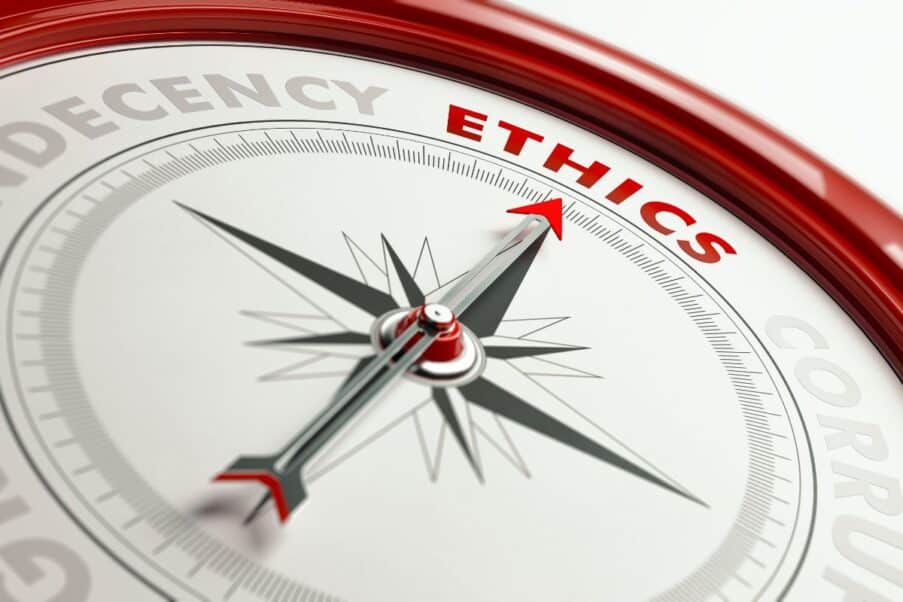Diversity, Equity and Inclusion in Fitness: What’s Your Strategy?
Set your fitness business up for wider reach and inspiration.

As a fitness entrepreneur, where do you begin when it comes to diversifying your business? And what, exactly, does that mean? While pursuing new revenue streams is one definition of diversification, there’s another, very important one. Your fitness facility, studio or online venture has the potential to impact many people, and “wellness” influences everyone. To truly diversify, create inclusion, and ensure equity for team members and customers, it’s critical to create a culture that exhibits these traits.
What Is DEI?
Let’s start by defining diversity, equity and inclusion (DEI), according to the U.S. Cooperative Extension System (2020):
Diversity is the presence of differences that may include race, gender, religion, sexual orientation, ethnicity, nationality, socioeconomic status, language disability, age, religious commitment or political perspective.
Equity promotes justice, impartiality and fairness within the procedures, processes and distribution of resources by institutions or systems. Tackling equity issues requires an understanding of the root causes of outcome disparities within society.
Inclusion ensures that diverse individuals feel welcomed. Inclusion outcomes are met when you, your business and your program are truly inviting to all. It includes the degree to which people of different backgrounds are able to fully participate in decision-making processes and development opportunities (Padamsee & Crowe 2017).
These facets of social operation work together and overlap to enhance everyone’s experience, forming a powerful model that creates belonging (Shore et al. 2011). If you want to create a welcoming space, it’s important to understand the impact of DEI culture. A variety of viewpoints creates a strong organization that aptly serves the consumer base. A cohesive medley of differences defines diversity. When you treat individuals as insiders in the workspace, you help create inclusion. Diversity and inclusion generate a mixture of voices that promote unification. However, without equity, those voices may not be treated fairly and impartially.
DEI incorporation begins with you, the business owner, and trickles down from there. Lack of a DEI plan can be linked to misaligned hiring practices and a dearth of diversity in leadership positions, among other factors. Maybe you’ve received feedback that the priority needs to shift to more inclusivity, especially if you’re experiencing challenges with staff retention. Poor retention can, in some cases, be attributed to whether or not people feel they’ve been treated fairly. When clients feel valued, are included in your community and feel respected among a diverse group of individuals, they’re more likely to keep coming back.
See also: Increasing Employee Diversity and Inclusion
Addressing Internal Biases in Your Business
We all have biases. The opinions we form about people, agendas or choices can hinder and sometimes harm our decision-making processes. If you have an implicit bias, you may not even be aware that you have a preference for one type of person or another when training, teaching or hiring. When you take the time to address your biases, you must drop defensiveness so that you can objectively move forward and open up your circle of trust to an even broader range of people.
Classifications create divisions within society, even though we all have unifying traits. Whatever the reasons for these divisions, they can lead to stereotypes and inequalities (Özbilgin 2009). Each individual has a unique combination of characteristics, including race, gender identity, ethnicity, disability, cognition, relationship status and generational age range. In spite of our differences, we want to belong. Finding common ground allows diverse individuals to come together. DEI’s goal is to promote and support this process. Unification is a powerful tool that can bring together a community, particularly in health and fitness.
Each individual is multidimensional and holds a special place in this world. Understanding this and how it might “bump up” against a personal bias is salient to providing fair and equitable treatment to all (Shore et al. 2011). Here are tips to help you address individual biases:
- Read training material aimed at dissecting implicit biases.
- Remain open to learning about these opinions and breaking free from ideas that are not based on fact (e.g., views about a specific age group not being open to do a particular workout). Expose your blind spots, because they limit your ability to help people reach their health and fitness goals.
- Take a look at your circle of influence. Are their diversity gaps? Does your staff or client base seem the same? How can they be more different?
- Proactively expand your circle to include others who are different from you and from whom you can learn and grow. In-person or online, network and expand your team, as well as your customer base. For example, create disability-inclusive offerings, or check to see that your equipment can accommodate morbidly obese individuals.
Once you and your staff integrate DEI initiatives, the effects pour into the common space, and members see and feel the difference. Fair pay, excellent benefits, motivational incentives and similar perks contribute to staff satisfaction. The difference between satisfied employees and passive ones can be as simple as their perception of how you make DEI a part of the culture.
See also: Gender Equity in Fitness: Are We There Yet?
Celebrating Differences
Employees and customers are all unique; their differences are valuable. Nothing fosters innovation quite like a circle of influence with a mix of varying talents and traits (Padamsee & Crowe 2017). When team members and customers receive fair treatment and the culture provides impartiality, equity is clearly present. Another factor to consider is accessibility, a component of the DEI framework that matters both in-person and online and refers to giving equitable access to everyone along a continuum of human ability and experience. Costs of membership or services span a broad range, for example, while individual needs may require tailored offerings. Remain objective and open to feedback from your staff and customers, and make adjustments accordingly.
Jay Guillory, an AFAA master instructor in Washington, D.C., summarizes the need for DEI initiatives and accessibility in the fitness industry: “Personal trainers have the unique opportunity to engage people of all ethnicities and disabilities through one common avenue: fitness,” he says. “The more our industry’s professionals are made aware of diversity, equity and inclusion, the more people we can extend our reach to. Trainers who are assigned clients [can] walk into a training situation and connect with the client on a more factual basis.”
Putting Together a Fitness DEI Plan
Hiring a DEI consultant is a wise investment. While you enhance your understanding of implicit biases and reshape your mindset, a DEI consultant works with you to increase integration and improve your chances of successfully reforming your practices. Fitness businesses, as a general rule, help and serve others. When you dissect operations to ensure that DEI initiatives weave throughout your business structure, it sets you up to serve even more people.
Nika White, MEd, a consultant specializing in strategic diversity and intentional inclusion based in Greenville, South Carolina, shares the following tips for working with a DEI consultant (White 2020):
- Before reaching out, clearly understand your challenges and what you believe your needs are.
- Be open to the DEI consultant having a different approach from yours. While you may think you have a specific need, the actual need may be quite different.
- Do preliminary internal work and be prepared. In other words, make sure you and your stakeholders are truly on board.
- Review your budget. This is a practical step that is often overlooked.
- Understand that a DEI consultant isn’t necessarily a diversity trainer. This is an important distinction, so ask upfront about the consultant’s purview.
What does the result of implementing a DEI strategy look like? Handful®, a fitness apparel line, is expanding its incorporation of diverse voices to reach and serve a broader audience. CEO Jennifer Ferguson’s passionate mission includes building a more diverse audience while making clothing for all women. Ferguson says she’s updated her mantra from fitting “all shapes and sizes” to serving “all shapes and shades.”
You’re committed to offering health, fitness and wellness options to combat chronic illnesses, motivate members to move, and create wholeness through health. Taking a deep dive into DEI allows you to go to a new level with your commitment.
The Benefits of Implementing a DEI Strategy
Hiring a DEI consultant for your fitness business will lead to many positive developments, including the following:
- You’ll develop a deeper and more meaningful understanding of staff and clients, which will translate to better programming and more productive and meaningful outcomes.
- You’ll create clear, measurable goals that you can review frequently to ensure progress and accountability.
- Your staff will feel more unified and inspired, which will encourage collaboration and a sense of community.
- You’ll develop meaningful and trusted relationships that solidify your business and the community you serve.
- A strong structure at the top will engender greater staff diversity and engagement as a cohesive unit. Everyone, from the top down, will be vested in the business’s success.
References
Özbilgin, M. 2009. Equality, Diversity, and Inclusion At Work: A Research Companion. Cheltenham, UK: Edward Elgar.
Padamsee, X., & Crowe, B. 2017. The Case for Diversity, Equity, and Inclusion. Unrealized Impact. Accessed Aug. 2020: unrealizedimpact.org/wp-content/uploads/2017/07/Unrealized_Impact-Final-072017.pdf.
Shore, L.M., et al. 2011. Inclusion and diversity in work groups: A review and model for future research. Journal of Management, 37 (4), 1262–89.
U.S. Cooperative Extension System. 2020. What is diversity, equity, and inclusion? Accessed Sep. 11, 2020: dei.extension.org/.
White, M. 2020. How to engage a DEI consultant for effective outcomes. Accessed Sep. 11, 2020: millmag.org/how-to-engage-a-dei-consultant-for-effective-outcomes/.
Katrina Liew Wilson
Katrina Liew Wilson is a certified personal trainer and fitness specialist, health and nutrition coach, group fitness instructor and wellness educator. She holds certificates in Diversity and Inclusion from Cornell University and the University of South Florida. She also has an Associate of Science Degree in graphic design and is completing a graduate degree in Nutrition: Health Promotion. Katrina is also the senior manager of diversity, inclusion, and belonging at Barry’s Bootcamp where she bridges gaps of equity, diversity, and inclusion through education and coaching. Her goal is to lead her community by example and relatability to shift the wellness culture to be one of belonging and accessibility.






